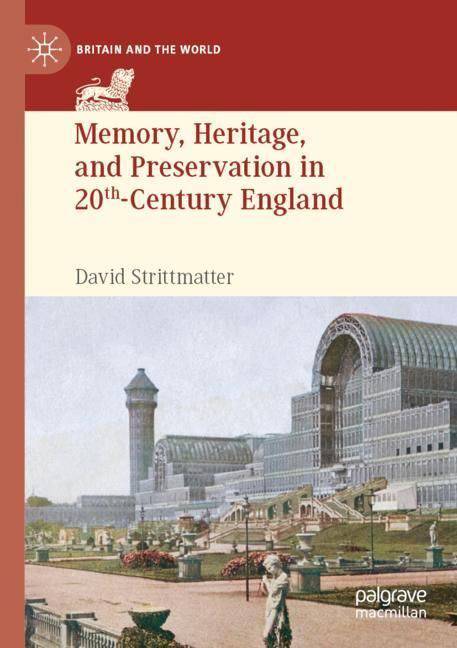
- Retrait gratuit dans votre magasin Club
- 7.000.000 titres dans notre catalogue
- Payer en toute sécurité
- Toujours un magasin près de chez vous
- Retrait gratuit dans votre magasin Club
- 7.000.0000 titres dans notre catalogue
- Payer en toute sécurité
- Toujours un magasin près de chez vous
Memory, Heritage, and Preservation in 20th-Century England
David StrittmatterDescription
This book explores commemoration practices and preservation efforts in modern Britain, focusing on the years from the end of the First World War until the mid-1960s. The changes wrought by war led Britain to reconsider major historical episodes that made up its national narrative. Part of this process was a reassessment of heritage sites, because such places carry socio-political meaning as do the memorials that mark them. This book engages the four-way intersection of commemoration, preservation, tourism, and urban planning at some of the most notable historic locations in England. The various actors in this process--from the national government and regional councils to private organizations and interested individuals--did nothing less than engineer British national memory. The author presents case studies of six famous British places, namely battlefields (Hastings and Bosworth), political sites (Runnymede and Peterloo), and world's fairgrounds (the Crystal Palace and Great White City). In all three genres of heritage sites, one location developed through commemorations and tourism, while the other 'anti-sites' simultaneously faltered as they were neither memorialized nor visited by the masses. Ultimately, the book concludes that the modern social and political environment resulted in the revival, creation, or erasure of heritage sites in the service of promoting British national identity. A valuable read for British historians as well as scholars of memory, public history, and cultural studies, the book argues that heritage emerged as a discursive arena in which British identity was renegotiated through times of transitions, both into a democratic age and an era of geopolitical decline.
Spécifications
Parties prenantes
- Auteur(s) :
- Editeur:
Contenu
- Nombre de pages :
- 299
- Langue:
- Anglais
- Collection :
Caractéristiques
- EAN:
- 9783031044717
- Date de parution :
- 10-03-24
- Format:
- Livre broché
- Format numérique:
- Trade paperback (VS)
- Dimensions :
- 148 mm x 210 mm
- Poids :
- 411 g

Les avis
Nous publions uniquement les avis qui respectent les conditions requises. Consultez nos conditions pour les avis.






